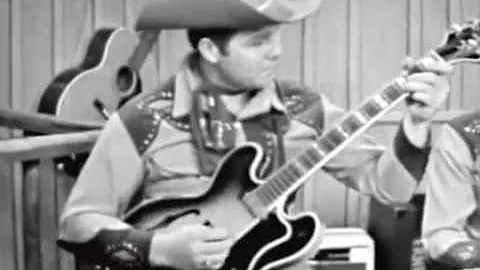Robert L Ernest
age ~81
from Detroit, MI
Robert Ernest Phones & Addresses
- 13337 Rosemary St, Detroit, MI 48213
Specialities
Litigation • Aviation Law
Lawyers & Attorneys

Robert Ernest - Lawyer
view sourceSpecialties:
Litigation
Aviation Law
Aviation Law
ISLN:
913588596
Admitted:
1998
University:
University of Massachusetts, B.A., 1995
Law School:
Suffolk University, J.D., 1998
Resumes

Robert Ernest
view source
Robert Ernest
view source
Robert Ernest
view source
Robert G Ernest
view source
Robert Ernest
view source
Robert Ernest
view source
Robert Ernest
view source
Robert Ernest
view sourceLocation:
United States
License Records
Robert Virgil Ernest
License #:
22466 - Expired
Category:
Nursing
Issued Date:
Oct 11, 1967
Effective Date:
Jan 24, 2007
Expiration Date:
Oct 31, 1970
Type:
Registered Nurse
Us Patents
-
Low Weight Reciprocating Engine
view source -
US Patent:42122813, Jul 15, 1980
-
Filed:Aug 14, 1978
-
Appl. No.:5/933340
-
Inventors:Robert P. Ernest - Dearborn Heights MI
-
Assignee:Ford Motor Company - Dearborn MI
-
International Classification:F02B 7522
-
US Classification:123193H
-
Abstract:An internal combustion V-8 engine is disclosed having an aluminum semi-permanent mold head cast by a low-pressure die-cast process and an iron block cast by the evaporative casting method. The block and head have controlled thickness walls throughout to optimally lower the metal/working volume ratio of the engine. The block employs barrel cylinder walls cast integrally and unsupported except at the barrel ends and at a siamese connection between adjacent barrels; the barrels are maintained under a predetermined level of compression to eliminate fatigue failure and suppress sound. The block is sand cast and the head is totally formed with a three piece die and one sand core cluster, except for one passage which is drilled subsequent to casting. The engine is reduced in weight by at least 20% over conventional comparable engines; torque and horsepower is improved even though the cooling system capacity has been reduced to less than half that of a conventional cooling system.
-
Internal Combustion Engine Control System
view source -
US Patent:40773663, Mar 7, 1978
-
Filed:May 26, 1976
-
Appl. No.:5/690116
-
Inventors:Laszlo Hideg - Dearborn MI
Robert P. Ernest - Dearborn Heights MI -
Assignee:Ford Motor Company - Dearborn MI
-
International Classification:F02B 5302
F02B 5310 -
US Classification:123203
-
Abstract:An apparatus and method for improving the combustion process of an internal combustion engine is disclosed. A prechamber containing a combustible mixture is designed to generate a torch eminating therefrom upon ignition; the torch is controlled to extend and penetrate deeply into the main combustion at a predetermined orientation without contact with the chamber walls. The swirling flame front of the sustained torch produces superior mixing with the unburned combustible mixture in the main combustion, particularly of a rotary engine. The prechamber is located outside the epitrochoid chamber of the rotary engine; in a nonstratified charge mode of this invention, the prechamber serves to receive a portion of the main chamber inducted charge during the compression cycle, which may lean and difficult to ignite in the main chamber. In the prechamber, concentrated hot walls and a localized spark facilitate ready ignition, which in turn permits generation of a torch therefrom. A scavenging system and method is disclosed which serves to drive residual gas elements from the prechamber after the completion of each combustion cycle; the scavenging apparatus may be operated with an independent gas supply, a supply derived from the carburetor or intake of the engine, or from the inducted mixture within the main chamber.
-
Induction-Exhaust System For A Rotary Engine
view source -
US Patent:39812766, Sep 21, 1976
-
Filed:Jun 6, 1974
-
Appl. No.:5/476833
-
Inventors:Robert P. Ernest - Dearborn Heights MI
-
Assignee:Ford Motor Company - Dearborn MI
-
International Classification:F02B 5300
-
US Classification:123 845
-
Abstract:An induction and exhaust system for a rotary engine is disclosed which has a wing-type reed valve assembly disposed in the intake port of said system and effective to respond instantaneously to a back-flow differential pressure for closing the intake port; the assembly is capable of cycling at least 120 times/second. The system substantially eliminates various types of dilution and variance of the inducted mixture enabling a high velocity peripherally ported engine to deliver an improved low end engine torque characteristic and improved overall fuel economy for a passenger automotive vehicle. Various types of wing reed valve constructions are illustrated, the preferred mode having 16 reed valves arranged with the trailing edge of the assembly cage aligned with the exit of the intake port; the center line of the intake port is located substantially at theoretical zero pressure difference between the adjacent chambers defined by the rotor and housing. A multiple-staged carburetor increases road load induction velocities and the induction air fuel mixture is heated by the exhaust system in a controllable manner through the use of a modulating flapper valve disposed in a heat transfer section.
-
Controlled Flow Cooling System For Low Weight Reciprocating Engine
view source -
US Patent:41096177, Aug 29, 1978
-
Filed:Dec 22, 1976
-
Appl. No.:5/753343
-
Inventors:Robert P. Ernest - Dearborn Heights MI
-
Assignee:Ford Motor Company - Dearborn MI
-
International Classification:F01P 302
-
US Classification:123 4174
-
Abstract:A light metal die-cast head and cast iron block employ a low volume cooling system which cooperates with the differing thermal conductivity properties of said head and block. The cooling concept eliminates the conventional intricate water jacket and replaces it with continuous grooves which wrap hemi-cylindrically about each combustion cylinder in a thinly spaced relation. The grooves are exposed along their length at the deck surface of either the head or block. The total fluid mass in the system is reduced to as little as 1/5. There are two such grooves in the block which (a) extend from one end thereof to the opposite end, (b) are on opposed sides of the cylinder galleys and (c) have substantially no transverse flow in order to promote laminar or controlled flow. There is a critically located straight drilled passage along with two such grooves in the head, the combination of which is restricted in throat area when compared to the throat area of the grooves in the block; this results in a high velocity flow in the head and a low velocity flow in the block when they are connected in series flow relation. The straight longitudinally drilled passage (which may include one or more of such passages) is located in the head separating the exhaust and metal valve guides; the passage has a throat area equal to or less than the throat area of either of the grooves in the head.
-
Low Weight Reciprocating Engine
view source -
US Patent:41366484, Jan 30, 1979
-
Filed:Dec 22, 1976
-
Appl. No.:5/753347
-
Inventors:Robert P. Ernest - Dearborn Heights MI
-
Assignee:Ford Motor Company - Dearborn MI
-
International Classification:F02B 7522
-
US Classification:123 55VE
-
Abstract:An internal combustion V-8 engine is disclosed having an aluminum semi-permanent mold head cast by a low-pressure die-cast process and an iron block cast by the evaporative casting method. The block and head have controlled thickness walls throughout to optimally lower the metal/working volume ratio of the engine. The block employs barrel cylinder walls cast integrally and unsupported except at the barrel ends and at a siamese connection between adjacent barrels; the barrels are maintained under a predetermined level of compression to eliminate fatigue failure and suppress sound. The block is sand cast and the head is totally formed with a three piece die and one sand core cluster, except for one passage which is drilled subsequent to casting. The engine is reduced in weight by at least 20% over conventional comparable engines; torque and horsepower is improved even though the cooling system capacity has been reduced to less than half that of a conventional cooling system.
-
Water Cooling System - Wankel Engine
view source -
US Patent:39644456, Jun 22, 1976
-
Filed:May 3, 1974
-
Appl. No.:5/466652
-
Inventors:Robert P. Ernest - Dearborn Heights MI
Charles M. Jones - Detroit MI
Edwin J. Ounsted - Dearborn MI
Hai Wu - Northville MI -
Assignee:Ford Motor Company - Dearborn MI
-
International Classification:F02B 5510
-
US Classification:123 801
-
Abstract:A rotary engine employing an improved circumferential flow cooling system is employed to provide an increase in fuel economy and engine efficiency. Each housing unit has its own distinct flow circuit with the total volume of cooling medium being variably distributed among such units. The circuits employ flow foils, flow turbulizers, velocity variation and a variable epitrochoid wall thickness to provide flow characteristics which vary along the stations of the circuit. The variations promote a more uniform engine wall temperature throughout, the coolant can be operated at a higher overall temperature, and heat is transferred (extracted or injected) on a programmed basis along the flow circuit as needed.
-
Internal Combustion Engine Control System
view source -
US Patent:40600580, Nov 29, 1977
-
Filed:Nov 28, 1975
-
Appl. No.:5/636184
-
Inventors:Laszlo Hideg - Dearborn MI
Robert P. Ernest - Dearborn Heights MI -
Assignee:Ford Motor Company - Dearborn MI
-
International Classification:F02B 5312
-
US Classification:123 809
-
Abstract:An apparatus and method for improving the combustion process of an internal combustion engine is disclosed. A prechamber containing a combustible mixture is designed to generate a torch eminating thereform upon ignition; the torch is controlled to extend and penetrate deeply into the main combustion at a predetermined orientation without contact with the chamber walls. The swirling flame front of the sustained torch produces superior mixing with the unburned combustible mixture in the main combustion, particularly of a rotary engine. The prechamber is located outside the epitrochoid chamber of the rotary engine; in a nonstratified charge mode of this invention, the prechamber serves to receive a portion of the main chamber inducted charge during the compression cycle, which may lean and difficult to ignite in the main chamber. In the prechamber, concentrated hot walls and a localized spark facilitate ready ignition, which in turn permits generation of a torch therefrom. A scavenging system and method is disclosed which serves to drive residual gas elements from the prechamber after the completion of each combustion cycle; the scavenging apparatus may be operated with an independent gas supply, a supply derived from the carburetor or intake of the engine, or from the inducted mixture within the main chamber.
-
Internal Combustion Engine Control System
view source -
US Patent:42599326, Apr 7, 1981
-
Filed:May 26, 1976
-
Appl. No.:5/690118
-
Inventors:Laszlo Hideg - Dearborn MI
Robert P. Ernest - Dearborn Heights MI -
Assignee:Ford Motor Company - Dearborn MI
-
International Classification:F02B 5310
-
US Classification:123209
-
Abstract:An apparatus and method for improving the combustion process of an internal combustion engine is disclosed. A prechamber containing a combustible mixture is designed to generate a torch emanating therefrom upon ignition; the torch is controlled to extend and penetrate deeply into the main combustion at a predetermined orientation without contact with the chamber walls. The swirling flame front of the sustained torch produces superior mixing with the unburned combustible mixture in the main combustion, particularly of a rotary engine. The prechamber is located outside the epitrochoid chamber of the rotary engine; in a nonstratified charge mode of this invention, the prechamber serves to receive a portion of the main chamber inducted charge during the compression cycle, which may be lean and difficult to ignite in the main chamber. In the prechamber, concentrated hot walls and a localized spark facilitate ready ignition, which in turn permits generation of a torch therefrom. A scavenging system and method is disclosed which serves to drive residual gas elements from the prechamber after the completion of each combustion cycle; the scavenging apparatus may be operated with an independent gas supply, a supply derived from the carburetor or intake of the engine, or from the inducted mixture within the main chamber.
Youtube
Googleplus

Robert Ernest

Robert Ernest

Robert Ernest

Robert Ernest

Robert Ernest

Robert Ernest
Classmates

Robert Ernest
view sourceSchools:
Butler County High School Greenville AL 1941-1946

Robert Ernest
view sourceSchools:
Strathcona Academy Outremont Kuwait 1931-1935
Community:
Catherine Wood, Kalman Kunin, Toba Herman, Ella May, Constance Carin, Mendel Cohen, Ella Ella May, Bernard Finestone, Albert Dunkelman, George Stevens

Butler County High School...
view sourceGraduates:
Robert Ernest (1941-1946),
Bridget Haynes (1996-2000),
Lucile Butler (1934-1946),
Ron Hamilton (1991-1995),
Thomas Kinney (1958-1970)
Bridget Haynes (1996-2000),
Lucile Butler (1934-1946),
Ron Hamilton (1991-1995),
Thomas Kinney (1958-1970)

Goodrich High School, Fon...
view sourceGraduates:
Robert Ernest (1982-1986),
Julie van Pelt (1960-1964),
Paula Streblow (1985-1989),
Sherry Hebenstreich (1979-1983),
Harold Bloedow (1961-1965)
Julie van Pelt (1960-1964),
Paula Streblow (1985-1989),
Sherry Hebenstreich (1979-1983),
Harold Bloedow (1961-1965)

Griffithville High School...
view sourceGraduates:
Robert Ernest (1971-1975),
Warren Lipscomb (1973-1977),
Robert Cartmill (1966-1970),
Dennis Hughes (1969-1973)
Warren Lipscomb (1973-1977),
Robert Cartmill (1966-1970),
Dennis Hughes (1969-1973)

Strathcona Academy, Outre...
view sourceGraduates:
Robert Ernest (1931-1935),
David Sokoloff (1944-1948),
John Shearman (1940-1944),
Rosemary Kaufman (1959-1961),
Harvey Grotsky (1948-1952)
David Sokoloff (1944-1948),
John Shearman (1940-1944),
Rosemary Kaufman (1959-1961),
Harvey Grotsky (1948-1952)
Plaxo

Ernest Robert
view sourceRidderkerk, The Netherlands
Myspace

Robert Ernest
view source
Robert Ernest Israel Kitali
view source
Robert Ernest
view source
Robert Ernest
view source
Robert Ernest
view source
Robert Ernest
view source
Robert Ernest
view source
Robert Ernest
view source
Robert Ernest Lim
view sourceGet Report for Robert L Ernest from Detroit, MI, age ~81






